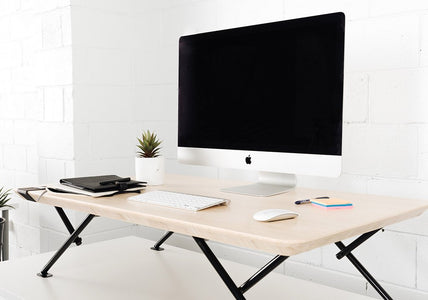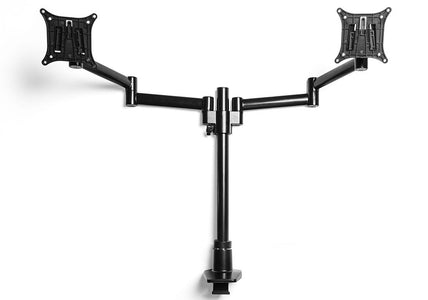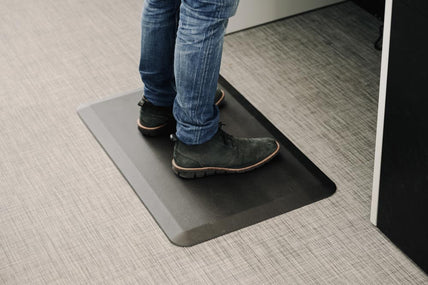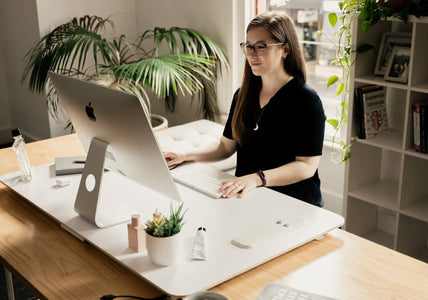The Goal Is To Move More In 2019. Here’s Why.
By Daniel Angelini on February 13, 2019Halfway through 2019 - Here's a healthy challenge for you!
You’ve had a great break with family and friends, you might have overindulged a little but it’s 2019, new year, new you and it’s your time to get back on track. That’s why you’ve signed up for that exercise program and committed to a gym membership, 3 times or even better 5 times a week. Go you!
So, right now, how’s this year looking for you? You’ve got your goals listed and one of them is to be fit, healthy and productive - you’re going to achieve a lot this year, both on a personal and professional level. And to top it off, you’re super motivated to keep this up throughout the year.
So, how much of your day is spent working towards your goal?
Now you’re back into the swing of things, your day might look a little like this:
| 5:30am | Wake up and get ready for the gym | Move for 30 mins |
| 6am | Gym session workout | Move for 1hr |
| 7.30am | Commute to work | Sit for 45 mins Move for 15 mins |
| 8:30am | Start your work day | Sit for 3.5 hrs Move for 30 mins |
| 12:30pm | Lunch break | Sit for 30 mins Move for 30 mins |
| 1:30pm | Back to work | Sit for 3.5 hrs Move for 30 mins |
| 5:30pm | Commute home | Sit for 45 mins Move for 15 mins |
| 6:30pm | Arrive home and get dinner sorted | Sit for 30 mins Move for 30 mins |
| 7:30pm | Downtime and get ready for bed | Sit for 1.5 hr Move for 30 mins |
Let’s add up these hours:
- Daily Sitting Time: 11 hours
- Daily Moving Time: 4.5 hours per day.
- Movement split into 1 hour high-intensity activity, 3 hours light-intensity.
And this doesn’t include the time you are asleep. Plus it's a pretty good day with a 5:30am start and a gym session, which generally doesn't happen everyday, especially in the middle of winter!
So while your exercise regime has a huge positive impact on your health, working at a desk job for a lot of the day can make it very hard for anyone to get the most out of their fitness goals. Simply because:
70% of your waking hours is spent sedentary.
Not moving, just sitting there with a few bathroom breaks, a coffee break and a small walk across the building to someone else’s office. This is the case for pretty much all of us who work at a desk all day.
But you are exercising. A lot. So does it matter?
If you keep up an exercise regime of 1 hour of high-intensity activity every single day for the rest of the year, you’re definitely on the right track to reducing any health risks associated with sitting. But what about the weeks you get busy at work, miss a few sessions and don’t make it? And the fact you’re sitting for such long stints? Should you worry? Well, sadly, yes.
Exercising doesn’t completely counteract the negative effects of prolonged sitting. You might exercise 5 days a week, every morning however, to make a simple analogy;
Smoking is bad for you even if you exercise a lot. So is sitting too much.
New evidence explains that if you are sedentary, you may potentially eliminate your health risks by doing 1 - 1.25 hours a day moderate-to-vigorous physical activity. However, even with this much exercise, the risk of developing several physical health issues, such as lower back pain, muscle atrophy, muscle stiffness and tension and diabetes, still remains when we are sitting for long periods of time each day.
About The Research
A study published on 27th July 2016 analysed over 1 million individuals to assess how many hours of physical activity are needed to reduce or eliminate the increased risk of all-cause mortality for those who sit for more than 8 hours a day.
The Results
Individuals who sat for more than 8 hours a day and undertook 1 - 1.25 hours a day of physical activity at the defined rate were seen to eliminate their increased risk of death associated with prolonged sitting time. This equates to 7 - 8.75 hours a week of exercise. This is significantly more than the physical activity guidelines from WHO, who recommend adults accumulate 2.5 - 5 hours of moderate-to-vigorous physical activity a week to receive the same benefit. The report also did confirm the relationship between an increased health risk of death for individuals who sit for long periods of time and aren’t physically active.
The Reality
It’s difficult for most of us to maintain this level of activity every day. Only 25% of the individuals in the analysis were able to achieve this much of physical activity on a daily basis. For the majority of us, incorporating 1+ hours of high-intensity physical activity into our busy daily schedule is challenging. According to the WHO, this is a trend being seen globally, in particular with adolescents.
Now I know the facts, what can I do about it?
It’s really simple, move more and move more regularly. MOVI can help you do this. By switching between sitting and standing at regular intervals, and moving regularly throughout your workday, you will notice improved strength, tone and overall mental wellbeing. There are other options too, explored in the following blog. Make this year a huge one that ends exactly how you planned it to when committing to your goals at the beginning of the year.
A little movement more often in addition to your other health goals will get you a long way in 2019.
Our next blog explores the health benefits of moving from the Health Experts we interviewed in The Sitting Epidemic.










